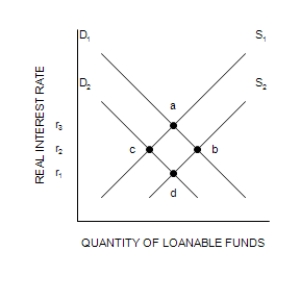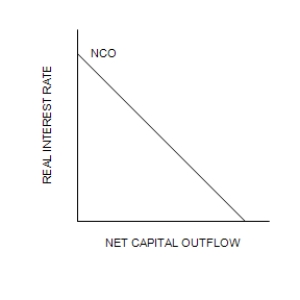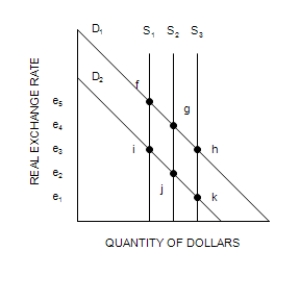Figure 32-5
Refer to the following diagram of the open-economy macroeconomic model to answer the questions that follow.
Graph (a)
Graph (b) 
 Graph (c)
Graph (c) 
-Refer to Figure 32-5. Suppose that initially the economy is in equilibrium at r1 (point d) and e3 (point i) . If the government removes import quotas, the exchange rate will move to
Definitions:
Selling
The act of offering goods or services in exchange for money or other goods and services.
Trade Surplus
A situation where the value of a country's exports exceeds the value of its imports over a certain period of time.
Net Capital Outflow
The difference between the domestic country's purchase of foreign assets and foreign purchases of the domestic country's assets over a certain period, often reflecting the flow of funds abroad.
Domestic Investment
Expenditures made within a country by individuals, businesses, or the government for the purpose of acquiring goods and services to increase future production.
Q11: Describe the process in the money market
Q18: A quality men's suit in the U.S.
Q66: Nominal GDP measures output of final goods
Q80: Suppose a bank has $3,000 in reserves,
Q115: If a county becomes less likely to
Q116: If the MPC is 0.50 and there
Q129: Increased output and prices in the United
Q181: An increase in the money supply will<br>A)increase
Q191: It takes more money to purchase the
Q200: If the inflation rate was 8%, and